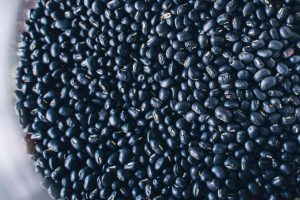
Benefits of black beans. Legumes high in protein, fiber, and several vitamins and minerals include black beans. They are well known for their health benefits, which include promoting heart health, facilitating digestion, and serving as a rich supply of iron, due to their high nutritional value.
BENEFITS OF BLACK BEANS
In addition, black beans are a cheap and adaptable culinary ingredient that can be used in a variety of recipes, including grilled bean burgers and cowboy caviar. For a more straightforward dinner alternative, try cooking soaked black beans with steamed rice for a filling, high-fiber, high carb meal!
1. Great Plant-Based Protein Source

Black beans are a good source of plant-based protein, which is necessary for tissue growth and repair. Therefore, include black beans in your regular meals can help combat protein deficiencies, particularly for vegetarians and vegans. Black beans can help vegans make up for their protein deficiencies, which are a drawback of avoiding high-protein meals like meat and fish.
2. Rich in Fiber
Black beans are rich in fiber, which supports good digestion, controls blood sugar, and aids in maintaining a healthy weight. Additionally, the high fiber content lowers the risk of heart disease, a serious chronic ailment, by regulating blood pressure and cholesterol.
3. Packed with Antioxidants
Antioxidants found in black beans shield cells from harm brought on by free radicals. Therefore, eating black beans on a daily basis can help you manage oxidative processes and associated health problems.
4. Heart-Healthy

Black beans include high levels of magnesium, potassium, and fiber. By controlling blood pressure and cholesterol, they promote heart health. Because of their low glycemic index, black beans help to keep the heart healthy by controlling blood sugar, cholesterol, and blood pressure. By regulating blood sugar levels that lead to type 2 diabetes, a major risk factor for a number of heart conditions, black beans can prevent heart disorders.
5. Rich in Iron
Iron, which is essential for distributing oxygen throughout the body and avoiding iron deficiency, which results in anemia, is found in black beans.
6. Supports Bone Density
Phosphorus, calcium, and magnesium all necessary for healthy bones are found in black beans. Therefore, if you consistently eat black beans, you will be less likely to develop progressive osteoporosis, a slow-growing orthopedic condition.
7. Low Glycemic Index

Black beans don’t raise blood sugar levels suddenly because they have a low glycemic index. Due to their extremely slow digestion and absorption, they cause a steady rise as opposed to a sudden jump. For diabetic people who need to closely monitor their blood sugar levels, this makes them a superfood.
8. Promotes Gut Health
Fiber is a prebiotic that feeds good bacteria in the gut. Black beans’ high fiber content contributes to the maintenance of a balanced gut flora, which is essential for both metabolic and general digestive health.
9. enhances cardiac health

Black beans make a great addition to a diet that promotes heart health. Black beans contain the following nutrients that reduce the risk of cardiovascular disease: Antioxidants reduce blood vessel inflammation. Atherosclerosis, or the hardening of the arteries, stroke, and other cardiovascular disorders can result from inflammation in your vessels. Flavonoids aid in maintaining a healthy range of cholesterol levels. One of the main risk factors for heart disease is high cholesterol. Potassium, magnesium, and folate are among the nutrients that help control heart rhythm and decrease blood pressure.
Summary
One of the most popular dry pulses consumed worldwide is black beans. Rich in plant-based protein, fiber, and antioxidants, they are regarded as nutritional powerhouses that aid in the regulation of blood pressure, blood sugar, and cholesterol levels. Black beans, like most legumes, contain antinutrients that might interfere with mineral absorption and digestion. They become softer and less antinutrient-rich when soaked or boiled before consumption.